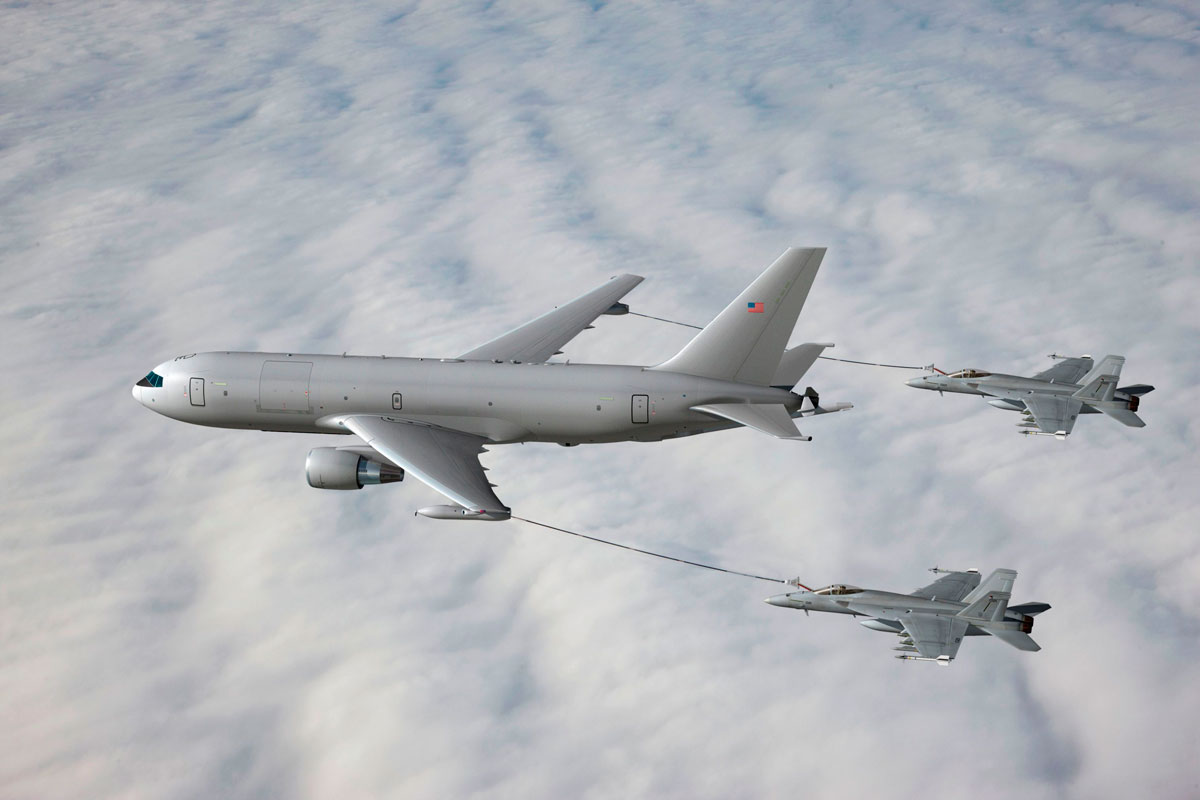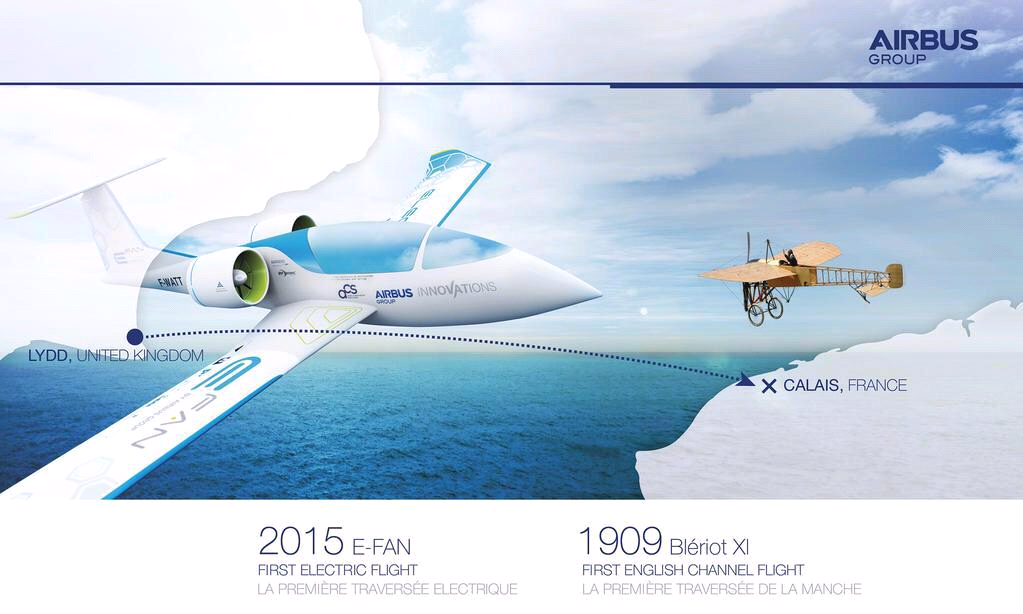Leeham News and Analysis
There's more to real news than a news release.
Pontifications: Catching up on the KC-46A, KC-30A
April 11, 2016, © Leeham Co.: The Government Accountability Office (GAO) concludes that the Boeing KC-46A aerial refueling tanker for the US Air Force has “challenging testing and delivery schedules” ahead in its annual review of the program.
It’s been a long, long time since I wrote about aerial refueling tankers. Having delved into this topic during the long-running saga of the USAF recapitalization effort, and the competitions between Northrop Grumman/EADS and later Airbus alone and Boeing, the topic had been beaten to death.
But as we who follow such things know, Boeing’s current effort to build the winning KC-46A for the Air Force has run into more than a few problems. These have led Boeing to be at least eight months late and write off $1.2bn pre-tax on the program.
And the problems aren’t over.
Pontifications: Airbus USA321 a milestone for US aerospace
March 28, 2016, © Leeham Co.: The first US-built A320ceo family member took to the skies for its first flight last week. The A321ceo, destined for JetBlue, is the first assembled at the new Airbus A320 plant in Mobile (AL).
This is a milestone for Airbus, obviously. The Mobile plant was first proposed as the assembly site for the KC-330 MRTT (Multi-Role Tanker Transport) proposed for the US Air Force to replace the aging Boeing KC-135s. Northrop Grumman, which paired with Airbus parent EADS (as it was then known) to offer the KC-330, won the contract. The celebration was short-lived. The Government Accountability Office overturned the award. Northrop bowed out of the next round of competition, which Boeing won.
Airbus subsequently decided to create an A320 assembly site at the same Mobile location planned for the KC-330. (I visited the site for grand opening last September.)
This is the fourth A320 assembly site, after Toulouse, Hamburg and Tianjin. Airbus hopes the Mobile site will help spur sales in the US, where it still trails Boeing in market share.
Milestone for US Aerospace
While this plant is a milestone for Airbus, it’s a milestone on a much more macro level, too. This is the first commercial airplane assembly site by a second airplane manufacturer since Boeing closed the McDonnell Douglas MD-11 and MD-95 (aka Boeing 717) assembly lines in Long Beach (CA) in 2000 and 2006, respectively. The last legacy MDC assembly site, for the military C-17, closed early this year.
ISTAT Day 1: Boeing developmental airplanes progressing
Feb. 29, 2016 (c) Leeham Co.: The Boeing 737 MAX rolled out on time, the 787-10 is in  production and the 777-9 is in firm configuration, says Randy Tinseth, VP-Marketing for Boeing Commercial Airplanes.
production and the 777-9 is in firm configuration, says Randy Tinseth, VP-Marketing for Boeing Commercial Airplanes.
- We’re at the 2016 ISTAT AGM in Phoenix and will be reporting today and tomorrow on presentations and news from the sidelines.
Boeing is watching oil prices, the global economy, geopolitical hot-spots, cargo demand and several other factors for the near-and long-term.
Airbus Group 2015 results: A330 increase to seven per month
By Bjorn Fehrm
24 February 2016, ©. Leeham Co: Airbus will increase the production rate of the A330 from six per month to seven beginning next year, it was announced today. The move comes after reducing the rate from 10 to nine and then to six per month as demand fell for the A330ceo ahead of the development of the A330neo.
from six per month to seven beginning next year, it was announced today. The move comes after reducing the rate from 10 to nine and then to six per month as demand fell for the A330ceo ahead of the development of the A330neo.
Strong sales of the ceo resulted in the about-face to increase the rate.
The news came from the Airbus Group financial results for full year 2015 today in London.
In all other aspects it was a year of solid execution with revenue up 6% to €64.5bn. Profits stayed flat at €4bn despite record deliveries; the A350 and A400M ramp-ups are costly exercises.
Other highlights were;
Airbus Group 3Q results; Increase of A320 production to 60 a month
By Bjorn Fehrm
Oct. 30, 2015, ©. Leeham Co: Airbus Group announced its increase of the production rate for the best-selling A320 range to 60 a month in conjunction with its 3Q 2015 results. The rate increase shall be seen against a backdrop of ever-increasing backlog for the A320neo, now at over 4,300 aircraft. The sales bonanza of the A320 is continuing with another 100 aircraft committed at Chancellor Merkel’s visit to China in October.
2015 results. The rate increase shall be seen against a backdrop of ever-increasing backlog for the A320neo, now at over 4,300 aircraft. The sales bonanza of the A320 is continuing with another 100 aircraft committed at Chancellor Merkel’s visit to China in October.
Airbus Group booked solid results for the third quarter, with order intake for Airbus for the year already secured in 3Q at 815 aircraft (791 3Q 2014). Noteworthy are the A330 bookings of 87 aircraft which have also continued in October with another 30 aircraft committed by China.
Revenue was up 6% to €43bn (€40bn 3Q 2014) and core operational EBIT was up 6.5% to €2.8bn compared to €2.59bn 3Q 2014. Free Cash Flow (FCF) was better than 3Q 2014, with €-1.8bn instead of €-2.1bn4. Airbus group expect FCF to be breakeven for the year.
Given the strong results Airbus Group has decided to buy back €1bn of shares before June 2016.
Details from the Airbus programs are:
Analysis: Airbus A350 production and accounting strategy
By Bjorn Fehrm
Subscription required.
Introduction
Oct. 12 2015, ©. Leeham Co: Airbus is ramping up the A350 program at a rather slow pace. For the first year of production, 2015, it plans 15 deliveries and “a little more than double that” for 2016. Airbus is also introducing “contract accounting” for the first A350 deliveries.
As initial costs for producing a new aircraft model can be 400%-500% higher than the ultimate run-in production cost, Airbus introduces this novel accounting principle to maintain 2015 and 2016 profits “at about the same level.”
We use our aircraft model to understand why Airbus is ramping the A350 as it is and why it uses “contract accounting.” We also show what would be the effects on Airbus profits should A350 not ramp slowly and Airbus use special accounting to keep group quarterly results from surprises.
Summary:
- The ramp of production of a new aircraft type is extremely expensive. Initial costs exceed what the customer pays for the aircraft with 400%-500%. This can generate company losses if no special actions are taken.
- We use our aircraft model to show what has been done for the A350 program and why.
- The wish to have a steady quarterly profit has forced Airbus to use the same accounting practices that is Boeing’s way to keep profits looking good, but with a shorter duration.
- We explain how this accounting works and what it will mean for Airbus profits.
Bjorn’s Corner: USAF Tanker program
By Bjorn Fehrm
 25 September 2015, ©. Leeham Co: When Scott Hamilton asked me to give my view on his article “Pontifications: Duelling refuelling tankers” I accepted. I was not involved in the project and was only following it casually over the years.
25 September 2015, ©. Leeham Co: When Scott Hamilton asked me to give my view on his article “Pontifications: Duelling refuelling tankers” I accepted. I was not involved in the project and was only following it casually over the years.
I will also not give my view on what would have been the most suitable tanker for the US Air Force. I simply don’t have the relevant military competence for that, having never operated my fighters with aerial tanking nor been in an aerial tanker aircraft.
Where I have relevant competence is in writing military specifications for important aircraft procurements and the excerpts I have seen from the tanker RFQ on key specification points don’t impress. Let me explain.
Pontifications: Dueling refueling tankers
Sept. 21, 2015, © Leeham Co.: This Friday, Sept. 25, is the date that at long last, Boeing and the US Air Force expect the first flight of the KC-46A that is equipped with the fueling system.
A “bare” KC-46A made its first flight last December. Then it spent the next six months or so on the ground. First flight of the second KC-46A, the one with the fueling system, has been delayed several times. All the program margin is gone and it’s going to be a challenge for Boeing to stay on schedule to deliver 18 combat-ready KC-46As to the USAF by 2017–two short years away. To try and stay on schedule, Boeing started production of the the airplane concurrent with the flight test aircraft, a risky proposition that could result in major rework or other difficulties if Murphy’s Law comes into play.
The KC-46A is the successor to the KC-767 International tanker program, which was an industrial disaster. Only eight airplanes were produced, four for Italy and four

Boeing KC-46A makes its first flight Sept. 25, 2015. Photo via Google images.
for Japan. It ran years late and hundreds of millions of dollars over budget. There were flutter and design issues. These problems became part of the risk assessment by the USAF in the KC-X competition evaluation between Boeing and Northrop Grumman/EADS–and one of the reasons why the Air Force selected the Northrop KC-330 offering (later named the KC-30).
Boeing successfully challenged the contract award and won the next round with what became known as the KC-46A. Boeing claimed it benefited from lessons learned from the KC-767 International program.
Bjorn’s Corner: Electrical flight, how real?
10 July 2015, ©. Leeham Co: We have just witnessed the first solar electrical aircraft, Solar Impulse 2, cross the ocean from Tokyo to Hawaii. Today, Friday, Airbus Group will cross the English Channel with a battery powered electrical aircraft, the E-Fan.
How real is electrical flying? Real enough to make demonstration flights like the one to Hawaii and to Calais. Both these aircraft are technology demonstrators but it is symptomatic that they do these hops now, 2015.
Airbus Group’s E-Fan aircraft is preparing to cross the English Channel. Source: Airbus.
We live in the years when electrical cars have gone from exotic one-offs to serial produced products, still expensive but more and more practical. Why should not the aircraft industry follow? Read more
A350 replacing A340-300 / 777-200ER, still on with lower fuel prices?
By Bjorn Fehrm
Subscription required.
Introduction
June 7, 2015, c. Leeham Co. We have just rounded off a series of articles around how A350 is to fly, its systems approach and lastly the conversion of Finnair’s A340/A330 pilots to A350. Finnair will replace the airlines A340-300 with the A350-900.
A question that comes up is how much more efficient is the A350 that is delivered to these airlines, and does the investment still make sense with today’s lower fuel prices? To get an answer we took the two customers that will get their A350 within the next months, Vietnam Airlines and Finnair, and we compared A350-900 to the aircraft that it will replace in their fleets, Boeing 777-200ER for Vietnam Air and Airbus A340-300 for Finnair.
We used our proprietary model to fly these aircraft over some typical routes for the airline’s, for Vietnam Airlines Saigon-London and for Finnair Helsinki-Shanghai.
Summary:
- The present aircraft are over 20% less efficient than A350 on these routes.
- For the A340 it is the engines which are the culprit, for the 777-200ER the wing.
- With a realistic fuel price for the planning period the differences in efficiency are large enough to motivate the switch.



